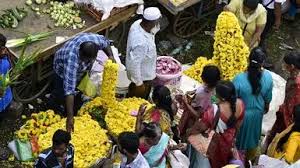15 September 2025 The Hindu Editorial
What to Read in The Hindu Editorial( Topic and Syllabus wise)
Editorial 1: Sliver of hope
Context
Expanding conservation beyond select species enables stronger protection of multiple habitats.
Introduction
The recent survey of saltwater crocodiles in the Sundarban Biosphere Reserve highlights a notable conservation achievement in India. The rising numbers and improved demographics underline the success of combining legal protection, captive breeding, and site-specific interventions. Importantly, this recovery reflects a gradual policy shift from focusing only on charismatic megafauna to embracing a more inclusive approach towards lesser-known species.
Conservation Progress and Policy Shifts
- Recent survey in Sundarban Biosphere Reserveshows a rise in saltwater crocodile population and demographic diversity.
- Marks a success of conservation laws moving beyond focus on megafaunalike tigers and elephants.
- Early implementation of the Wildlife (Protection) Act, 1972was skewed towards charismatic species.
- Crocodiles, less popular with the public, recovered through initiatives like the Bhagabatpur Crocodile Project.
- India’s model of combining blanket legal protectionwith captive breeding and release programmes has proven effective.
- However, laws remain reactiveand lack provisions for climate change, habitat fragmentation, and salinity shifts.
Ecological Significance of Crocodiles
- As apex predators, crocodiles regulate prey populations and clear carcasses, maintaining water quality.
- Their presence indicates healthy mangrove ecosystemsdespite pressures from human activity, cyclones, and sea-level rise.
- Improved juvenile survivalsuggests breeding habitats are still viable.
- Stable age structure could enhance resilience of Sundarbans’ mangrove networks.
- Population growth signals ecological stabilityin the delta region.
Lessons for Broader Conservation
- Recovery shows that non-charismatic speciescan thrive with sustained protection and targeted programmes.
- Current Schedules under Wildlife Actshould be supplemented with proactive recovery plans.
- Conservation communication must highlight the importance of neglected species.
- Climate change must be integrated:
- Crocodiles tolerate salinity changes, but many amphibians and freshwater reptilesdo not.
- Requires climate refugia identificationand assisted breeding measures.
- Demonstrates the possibility of a richer, inclusive conservation visionfor India.
Conclusion
The Sundarban crocodile recovery demonstrates that sustained investment, legal safeguards, and site-specific interventions can yield lasting results even for non-charismatic species. It offers lessons for wider biodiversity management in India, emphasizing the integration of climate change adaptation, inclusive recovery plans, and public awareness. A richer conservation vision, beyond iconic animals, is both possible and essential for ecological resilience.
Editorial 2: Improving macros
Context
India anticipates a period of subdued inflation and comparatively strong growth.
Introduction
India’s retail inflation in August 2025 rose slightly to 2.1%, ending a nine-month decline but remaining within the RBI comfort zone (2%-6%). Food prices, including vegetables (-15.9%) and pulses (-14.5%), remained subdued, supported by the National Food Security Act. Low inflation, combined with high economic growth, signals a favorable macroeconomic environment and a shift from last year’s high-inflation scenario.
Current Inflation Scenario (August 2025)
- Retail inflation rose slightlyin August, ending a nine-month declining trend.
- Rate:1%, still within the RBI’s comfort band (2%-6%).
- Macroeconomic risk:Minimal; both government and RBI are unlikely to be alarmed.
- Food inflation:Subdued across urban and rural areas.
- Vegetables:Prices fell 9%.
- Pulses:Prices fell 5%.
- Support:National Food Security Act ensures affordable staples.
- Inflation in other essentials like clothing, housing, fuel, and lightremained low, even lower than July.
Macroeconomic Outlook Comparison
- Last year:Low growth, high inflation.
- Current year:High growth, low inflation.
- Growth-Inflation Differential:
- Last year: ~2.1 percentage points
- This year: ~5.5 percentage points→ a healthy gap.
- Data reliability:GDP and inflation comparisons remain valid, despite standard questions.
Future Inflation Prospects
- Outlook:Benign; inflation likely to remain under control.
- Oil scenario:
- India may reduce Russian oil importsunder U.S. pressure.
- Impact limiteddue to relatively low global crude prices.
- GST rate changes:
- Effective from September 22
- Expected to reduce prices, further easing inflation.
- Monetary policy expectations:
- Q1 performance raises hopes for RBI rate cuts.
- Given global uncertainties, a September cutmay be premature.
- December rate cutis a more likely outcome, depending on India-U.S. relations.
Key Inflation Indicators (August 2025)
| Indicator | August 2025 | Notes |
| Retail Inflation | 2.1% | Within RBI comfort zone |
| Vegetable Prices | -15.9% | Contributes to food affordability |
| Pulses Prices | -14.5% | Supported by NFSA food distribution |
| Other Essentials Inflation | Low | Lower than July; includes clothing, housing, fuel |
| Growth-Inflation Gap | 5.5 ppt | Significantly improved vs last year |
Conclusion
The current low inflation-high growth scenario strengthens India’s macroeconomic outlook. With GST rate cuts and limited impact from potential oil supply shifts, inflation is expected to remain benign. Although the RBI may consider future interest rate adjustments, the overall environment suggests continued price stability, improved affordability, and a supportive framework for sustaining economic momentum in the coming months.
![]()


